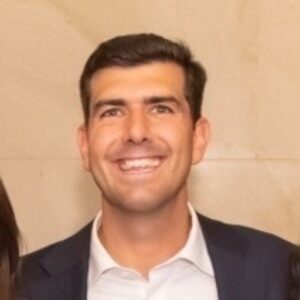John DeNavi is Director of Partner Development for Forage, part of EAB and Seramount. In this role, he is responsible for supporting new partner organizations by helping them build world class recruiting programs using Forage technology. Before joining Forage, John spent 10 years at a leading global executive search firm working across APAC and North America. There, he delivered C-level search and leadership development programs for the world’s top companies. John has an MBA from INSEAD and a Bachelor’s degree in Aeronautical Engineering from the University of Sydney.
How Talent Acquisition is Redefining Workforce Planning

We are hearing top talent leaders ask the same questions: Which of my business functions will grow? Which will shrink or be transformed by AI? And what skills will be essential in two, five, and ten years—and where will we find the people who have these skills?
The job market is shifting quickly. Baby boomers are retiring at a rate of 10,000 per day, and younger generations are entering the workforce with different expectations. Workforce planning—the ability to anticipate talent shortages, skills gaps, and hiring demands—is a top concern for Talent Acquisition (TA) leaders today.
Why Workforce Planning Matters for TA Leaders
For years, workforce planning was viewed as a separate HR function. But in today’s labor market, top TA leaders are taking a more proactive role in shaping the future workforce. As companies reevaluate strategy in the wake of reorganizations, digital transformation, and shifting market demands, workforce planning has become a cross-functional imperative—aligning people strategy with business execution and ensuring TA, HR, and business leaders are working toward shared goals.
Consider these workforce trends:
- The labor force is shrinking. As older workers retire, fewer younger workers are available to replace them, creating increased competition for talent.
- Skills gaps are widening. By 2027, nearly half of core job skills will be disrupted by technological advancements such as artificial intelligence (AI), meaning companies must rethink how they identify and develop talent.
- Generational shifts are accelerating. Younger generations prioritize flexibility, purpose-driven work, and development opportunities, while companies face the challenge of replacing retiring expertise with future-ready skills.
- Roles are being redefined. According to the World Economic Forum, AI and tech advancements are expected to transform 86% of businesses by 2030, creating 11 million new jobs while displacing 9 million. Roles in areas such as AI, big data, and fintech are growing quickly, while administrative and clerical jobs are in steep decline.
Workforce planning helps businesses align teams around the future by tracking what’s changing, what’s staying the same, and what’s being phased out—not just reacting to the present.
How Forage Helps TA Leaders Plan for the Future
Forage makes it easier for TA teams to align hiring efforts with workforce planning by helping companies build evergreen talent pipelines that are focused on contextual skills and designed to meet talent through digital channels. With Forage, organizations can:
- Build Evergreen Pipelines
TA teams often scramble to fill roles once a vacancy opens. Forage enables companies to engage prospective employees early, through virtual job simulations that showcase real work experiences. This means recruiters will already have a warm pipeline of candidates who understand the company and its expectations before they even apply.
This is especially valuable as companies build talent strategies around emerging job categories and prepare for generational turnover. By cultivating talent early, organizations can ensure continuity and reduce time to hire for future-critical roles.
- Provide Immersive Digital Experiences
Today, brands are expected to be engaging and personalized, but there’s often a disconnect between employer branding and recruiting. Today’s candidates are looking for more than polished messaging—they want to know what it’s really like to work at a company. Virtual job simulations offer a scalable way to bridge that gap, providing an authentic way for employers to showcase their opportunities while giving candidates hands-on experience.
Forward-thinking companies are also using virtual tours to give candidates a deeper look into workplace culture and team dynamics. These experiences can help companies stand out in a crowded talent market.
- Stay Ahead of Hiring Trends
TA leaders who rely only on traditional recruiting methods will struggle to keep up with the pace of workforce change. Forage gives companies valuable data on which candidates are most engaged, what skills are trending, and how hiring strategies should evolve to meet future workforce needs.
Workforce planning isn’t a separate function from talent acquisition. This data can also support broader stakeholder alignment—helping HR, business leaders, and TA work together to understand emerging talent demands and proactively adjust workforce plans. The best TA leaders aren’t just thinking about today’s hiring needs—they’re planning for the next decade. This is the key to staying competitive in a dynamic job market.
With Forage, companies can take a proactive approach to hiring, building stronger talent pipelines and ensuring they have the right people in place for the future. Interested in learning more? Let’s talk.




